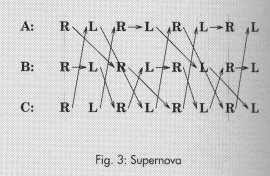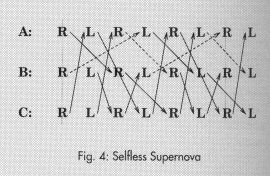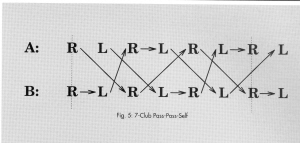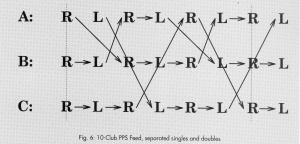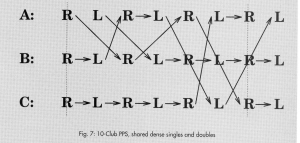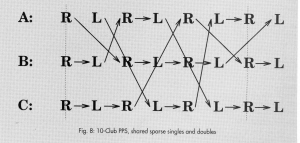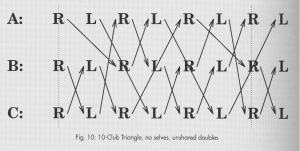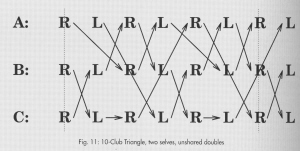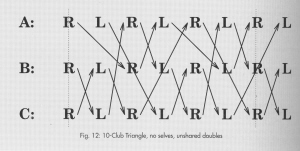|
Supernova
Revisited Last time I described the Supernova and showed the table of throws for that 10-club pattern. But I didn't show the actual causal diagram, so I've included it here in Fig. 3 (it is easily derived from the table).
You can look at a diagram, like the Supernova's, and see how to change it, for instance to take out the few remaining selves. Fig. 4 shows the diagram for the Supernova with the selves replaced by doubles or triples, which land, perforce, when the selves would have. These new doubles and triples are shown as the dotted lines in Fig. 4. This is a sample of how you can create a new pattern from an existing one.
Feed
and Triangle Extensions If
you're familiar with my seven-club PPS pattern, where one person
throws doubledouble-self and the other throws self-singledouble
(see the Spring 1993 Juggler's Workshop),
we'll show some ways to extend that pattern to three people. Fig. 5
shows the original PPS pattern for two people.
We
can take the person who is throwing both singles and doubles (B in
Fig. 5) and split that role into two easier roles. Each of the two
I was looking at these causal diagrams and decided to replace selves with passes wherever I could. Some results are shown in Figs. 9, 10, 11 and 12. Fig. 9 results from turning pairs of simultaneous selves in Fig. 8 into pairs of exchanged passes on counts one (B&C), three (A&B) and six (A&C).
Fig.
10 comes from Fig. 9 by interchanging B's and C's throws on count two
as well as on count five, to get rid of a self on each of those
counts. In addition, B's and C's passes on count six have been
interchanged, so that B doesn't have to throw any doubles. Note that
there are now no selves.
If
we go back to Fig. 9 and reverse the roles of B and C in the second
half of the pattern, then we get Fig. 11, where B again throws
only singles.
Finally
if we again interchange the throws |
